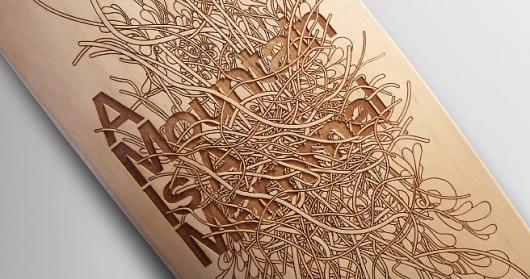Lecture Summary:
To introduce historical conceptions of identity.
To introduce Foucault’s ‘discourse’ methodology.
To place and critique contemporary practice within these frameworks, and to consider their validity.
To consider postmodern FUCK.
Theories of Identity:
Essentilism (traditional approach)
Our biological make up makes us who we are.
Physiognomy / Phrenology:
Cesare Lombroso (1835-1909) - Founder of Positivist Criminology - The notion that criminal tendencies are inherited.
Physiognomy Legitimising Racism:
Historical Phases of Identity:
Douglas Kellner - Media Culture: Cultural Studies, Identity and Politics beteen the modern and postmodern,1992.
Pre Modern Identity:
Institutions determined identity.
Secure Identities.
Farm-worker - Landed Gentry.
The Soldier - The State.
The Factory Worker - Industrial Capitalism.
The Housewife - Patriarchy.
The Gentleman - Patriarchy.
Husband/Wife - Marriage/Church.
Modern Identity 19th-20th Century:
Charles Beaudelaire - The Painter of Modern Life (1863) introduces concept of the ‘flaneur’ (Gentleman-stroller)
Thorstein Veblen - Theory of the Leisure Class (1899) ‘Conspicuous consumption of valuable goods is a means of reputability to the gentleman of leisure’.
Georg Simmel - Trickle down theory, Emulation, Distinction, The ‘Mask’ of Fashion. Lower classes tended to emulate what the higher classes wore by purchasing ‘cheap knockoffs’.
“The feeling of isolation is rarely as decisive and intense when one actually finds oneself physically alone, as when one is a stranger without relations, among many physically close persons, at a party, on a train, or in the traffic of a large city."
Post Modern Identity:
Disclosure Analysis.
Identity is constructed out of the discourses culturally available to us.
What is a discourse?
“a set of recurring statements that define a particular cultural ‘object’ (e.g., madness, sexuality, etc) and provide concepts and terms through which such an object can be studied and discussed” Cavallaro, (2001)
Possible discourses:
Age, Class, Gender, Nationality, Race, Sexual Orientation, Education, Income, Etc.
Discourses to Consider.
Class, Nationality, Race, [Gender and sexuality - Otherness].
Class:
Humphrey Spender - Worktown project (1937)
Mass observation, Observing British living. Went to Bolton to document it. Perspectives of the working classes.
Ascot (2003) - Lower classes playing at being upper class.
Nationality:
Parr - Think of England (2000-2003)
Alexander McQueen - Highland Rape - Claims it is not about rape of women, but about the rape of Scotland by England, sensationalist.
Race/Ethnicity:
Chris Ofili - First important black artist. - No Woman, No Cry (1998), Virgin Mary, Captain Shit and the Legend of the Black Stars (1994). Uses Elephant dung as a stereotypical representation of black people.
Gillian Wearing, from Signs that say what you want them to say and not signs that say what someone else wants you to say, (1992-1993). Won the Turner prize.
Gender and Sexuality:
‘Ed Bergler, an American psychoanalystwriting in the 1950s, went much further, both in condemning the ugliness of fashion and in relating it to sex. He recognised that the fashion industry is the work not of women, but of men. Its monstrosities, he argued, were a “gigantic unconscious hoax” perpetrated on women by the arch villains of the Cold War –male homosexuals (for he made the vulgar assumption that all dress designers are “queers”). Having first, in the 1920s, tried to turn women into boys, they had latterly expressed their secret hatred of women by forcing them into exaggerated, ridiculous, hideous clothes’ Wilson, E. (1985), Adorned in Dreams: Fashion and Modernity, London, I.B. Tauris, page 94
Cover of La Garconne, by Victor Marguerite, 1922, and ‘Garconne’ in dress by Welly Soeurs, c. 1926
Post Modern Theory:
•Identity is constructed through our social experience.
•Erving Goffman The Presentation of Self in Everyday Life(1959).
•Goffman saw life as ‘theatre’, made up of ‘encounters’ and ‘performances’.
•For Goffman the self is a series of facades.
Zygmunt Bauman.
‘Yes, indeed, “identity” is revealed to us only as something to be invented rather than discovered; as a target of an effort, “an objective”’
Postmodern Identity.
Rene Discartes (1596 - 1650) - Enlightenment Philosopher: “I think, therefore I am.”
Barbara Kruger then transforms this:
“The typical cultural spectator of postmodernity is viewed as a largely homecentred and increasingly solitary player who,via various forms of ‘telemediation’ (stereos,game consoles, videos and televisions),revels in a domesticated (i.e. private andtamed) ‘world at a distance’”Darley (2000), Visual Digital Culture, p.187
“If I put up a flattering picture of myself with a list of my favourite things, I can construct an artificial representation of who I am in order to get sex or approval. (‘I like Facebook,’ said another friend. ‘I got a shag out of it’)” Tom Hodgkinson (2008), ‘With friends like these …’, Guardian, 14/01/08
“The notion ‘you are who you pretend to be’ has a mythic resonance. The Pygmalion story endures because it speaks to a powerful fantasy: that we are not limited by our histories, that we can be recreated or can recreate ourselves... Virtual worlds provide environments for experiences that may be hard to come by in the real ”Sherry Turkle (1994), Constructions and Reconstructions of the Self in Virtual Reality ‘In the brave new world of fleeting chances and frail securities, the old-style stiff and non-negotiable identities simply won’t do’ Bauman (2004), Identity, page 27
‘Fun they may be, these virtual communities, but they create only an illusion of intimacy and a pretence of community’ Charles Handy (2001), The Elephant and the Flea, Hutchinson, page 204
‘“Identity” is a hopelessly ambiguous idea and a double-edged sword. It may be a war-cry of individuals, or of the communities that wish to be imagined by them. At one time the edge of identity is turned against “collective pressures” by individuals who resent conformity and hold dear their own ways of living (which “the group” would decry as prejudices) and their own ways of living (which “the group” would condemn as cases of “deviation” or “silliness”, but at any rate of abnormality, needing to be cured or punished’Bauman (2004), Identity, page 76
















































